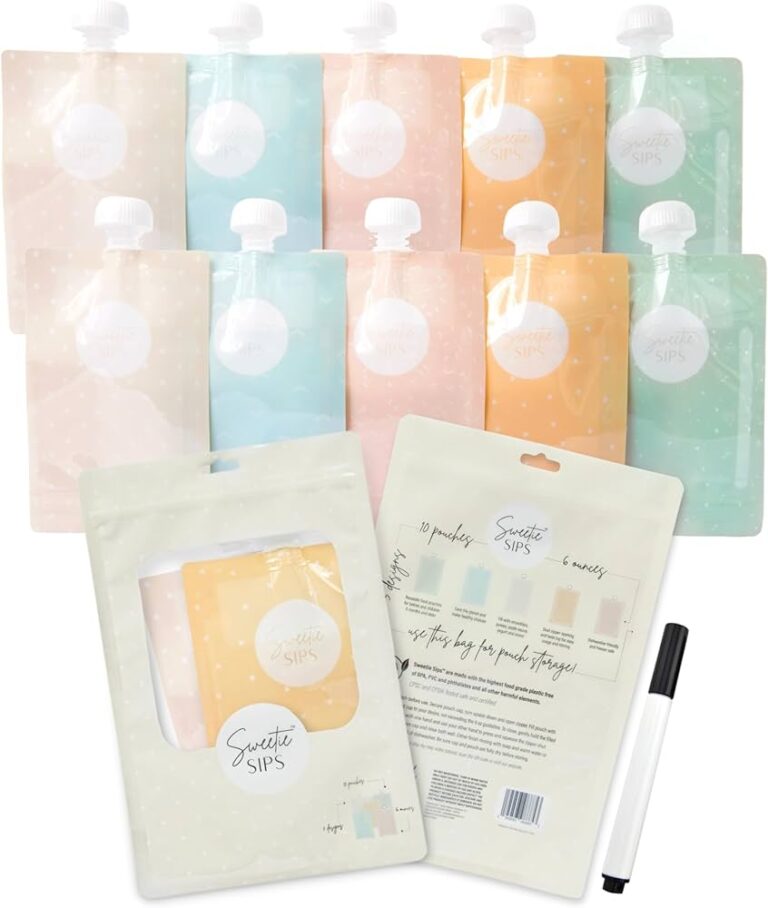How to Swaddle a Baby in a Blanket: Expert Techniques for Soothing and Sleep
To swaddle a newborn in a blanket, wrap the right corner over the baby’s body, tucking the end of the blanket underneath. Swaddling is an effective technique often taught by nurses in hospitals, as it can mimic the comforting sensation of the womb and help soothe and promote better sleep for the baby.
When done correctly, swaddling is a safe and beneficial practice for newborns. We will explore the step-by-step process of swaddling a baby in a blanket, as well as provide safety tips and guidelines to ensure proper swaddling. Learn how to swaddle your baby and create a nurturing and calming environment for your little one.

Credit: www.thebump.com
Benefits Of Swaddling A Baby
Swaddling a baby in a blanket can provide a sense of security and comfort, as it mimics the warmth and snugness of the womb. This technique is especially useful in soothing newborns and promoting better sleep.
Improves Sleep Quality For Newborns
One of the greatest benefits of swaddling a baby is that it improves sleep quality for newborns. When a baby is swaddled, it helps them feel secure and cozy, mimicking the feeling of being in the womb. This sense of security helps them relax and sleep better, reducing fussiness and promoting longer and more restful sleep (Pampers).
Provides A Sense Of Security And Comfort
Swaddling provides babies with a sense of security and comfort. Being wrapped tightly in a blanket creates a familiar and snug environment that reminds them of being in the womb. This helps to calm the baby, reduce crying, and promotes a peaceful and contented state (Huckleberry).
Reduces The Startle Reflex
Another important benefit of swaddling a baby is that it reduces the startle reflex. Newborns have a natural startle reflex, also known as the Moro reflex, which can cause them to wake up suddenly. Swaddling helps to restrict the baby’s movements and prevent their arms from flailing, reducing the likelihood of the startle reflex being triggered (BreathableBaby).
Choosing The Right Swaddle Blanket
Swaddling a baby in a blanket can provide comfort and mimic the feeling of the womb. This technique, often learned in the hospital, involves wrapping a thin blanket snugly around the baby’s body. When done correctly, it can help soothe the baby and promote calmness.
Different Types Of Swaddle Blankets Available
When it comes to swaddling your baby, it’s important to choose the right type of swaddle blanket that suits your baby’s needs and comfort. There are several different types of swaddle blankets available in the market. Let’s take a closer look at each type:- Muslin swaddle blankets: These blankets are made from lightweight and breathable fabric, providing a cozy and secure environment for your baby. Muslin swaddle blankets are perfect for warmer weather and can also double as a nursing cover or stroller cover.
- Square swaddle blankets: Square swaddle blankets are typically made from cotton or bamboo, offering softness and stretch. These blankets are versatile and can be folded and used in various ways to create a snug swaddle for your little one.
- Rectangular swaddle blankets: Rectangular swaddle blankets are similar to square blankets but come in a longer shape. These blankets provide extra wiggle room for your baby’s legs and are ideal for tucking your baby in securely.
- Cellular swaddle blankets: Cellular swaddle blankets are made from a lightweight yet warm fabric with small holes, allowing for better airflow and temperature regulation. These blankets are great for all seasons and provide a snug and comfortable swaddle for your baby.
- Hospital swaddle blankets: Hospital swaddle blankets are often made from soft and breathable fabric, perfect for newborns. These blankets are designed to mimic the snugness of the womb and provide a secure and soothing swaddle for your baby.
Factors To Consider When Selecting A Swaddle Blanket
Choosing the right swaddle blanket for your baby involves considering a few important factors. By keeping these factors in mind, you can ensure a safe and comfortable swaddle for your little one.- Fabric: Select a swaddle blanket made from soft and breathable fabric, such as muslin or cotton. This will keep your baby comfortable and prevent overheating.
- Size: Ensure the swaddle blanket is large enough to wrap your baby snugly, but not too large that it becomes difficult to secure the swaddle. A blanket that is too small may restrict your baby’s movement, while one that is too big may come loose easily.
- Ease of use: Look for swaddle blankets that are easy to wrap and secure. Velcro or snaps can make the swaddling process simpler, especially for new parents.
- Washability: Babies can be messy, so opt for swaddle blankets that are machine washable. This will make it much easier to keep the blanket clean and hygienic.
- Design and aesthetics: While not essential, choosing a swaddle blanket with a cute and visually appealing design can add a touch of fun and style to your baby’s swaddle.
Step-by-step Guide To Swaddling A Baby
Swaddling is a comforting and soothing technique that can help your baby feel safe and secure. When done correctly, swaddling can also promote better sleep and reduce startling. Follow this step-by-step guide to swaddle your baby safely and effectively.
Preparation And Creating A Safe Environment
Before you begin swaddling your baby, it’s important to prepare the environment and ensure their safety. Follow these steps:
- Choose a flat surface: Find a clean and flat surface, such as a bed or changing table, to lay your baby down.
- Gather your supplies: Have a soft and lightweight blanket specifically designed for swaddling ready. Make sure it is large enough to comfortably wrap your baby.
- Wash your hands: Wash your hands thoroughly with soap and warm water to maintain cleanliness.
Proper Positioning Of The Baby
Next, position your baby properly to ensure a safe and secure swaddle:
- Lay the blanket flat: Spread the blanket out flat, keeping one corner folded down slightly.
- Place your baby on the blanket: Lay your baby down on their back, with their neck and head resting on the folded corner of the blanket.
- Align their shoulders: Position your baby’s shoulders just below the top edge of the blanket.
Folding And Securing The Swaddle Blanket
Now, it’s time to fold and secure the swaddle blanket around your baby:
- Take the left corner: Take the left corner of the blanket and bring it across your baby’s chest, tucking it snugly underneath their body.
- Fold the bottom of the blanket: Fold the bottom of the blanket up, covering your baby’s feet and legs.
- Bring the right corner: Take the right corner of the blanket and bring it across your baby’s chest, securing it with the left corner by tucking it underneath their body.
Tips For A Snug And Secure Swaddle
To ensure your baby’s swaddle is snug and secure, keep these tips in mind:
- Leave room for hip movement: Make sure the swaddle is not too tight around your baby’s hips, allowing for movement and proper hip development.
- Securely tuck in the blanket: Double-check the tucked corners to ensure they are securely tucked underneath your baby.
- Watch for signs of overheating: Keep an eye on your baby’s temperature to prevent overheating. Adjust the clothing layers accordingly.
Remember, every baby is different, and it may take some practice to find the swaddle technique that works best for your little one. Don’t be discouraged if it takes a few tries to get it just right. With time and patience, swaddling can become a soothing routine for both you and your baby.
Expert Techniques For Soothing And Sleep
Swaddling a baby in a blanket is a popular technique to help soothe and promote better sleep. By wrapping your baby snugly in a thin blanket, it mimics the feeling of being in the womb, providing comfort and security. Proper swaddling technique can be learned from nurses in the hospital and can be an effective way to calm your newborn.
Using Swaddling As Part Of A Calming Bedtime Routine
Swaddling is an age-old technique that has been used for centuries to help soothe and calm babies. It involves wrapping your little one snugly in a blanket, mimicking the secure feeling of being in the womb. This can be especially helpful during bedtime, as it creates a sense of security and comforts your baby, promoting a more restful sleep.
Incorporating swaddling into a calming bedtime routine can have additional benefits. When done consistently, it signals to your baby that it’s time to wind down and prepare for sleep. This routine can include activities such as a warm bath, gentle massage, and quiet time. By including swaddling as part of this routine, you can create a familiar and comforting environment that helps your little one relax and prepare for a restful night’s sleep.
Techniques For Keeping A Swaddled Baby Calm And Relaxed
Swaddling is not just about wrapping your baby in a blanket; it’s about creating a soothing environment that helps them feel safe and secure. Here are some expert techniques to ensure your swaddled baby stays calm and relaxed:
- Use a proper swaddle technique: There are different swaddling techniques you can use, such as the diamond swaddle or the square swaddle. Experiment and find the technique that works best for you and your baby.
- Choose the right blanket: Opt for a soft, breathable blanket made from muslin or cotton. This will ensure your baby stays comfortable and doesn’t overheat.
- Keep the swaddle snug but not too tight: The key to a successful swaddle is to wrap your baby snugly, but not too tight. Ensure their hips and legs have enough freedom of movement and avoid covering their face.
- Create a calm sleep environment: Dim the lights, play soft music or white noise, and maintain a quiet, peaceful atmosphere in your baby’s sleep space. This will help them feel more relaxed and ready for restful sleep.
How To Transition From Swaddling To Sleep Without Swaddle
As your baby grows, you may need to transition them out of swaddling to promote healthy sleep habits and encourage independent movement. Here are some steps to help you make a smooth transition:
- Start with one arm out: Begin by swaddling your baby with one arm out. This allows them to gradually get used to the sensation of having more freedom of movement.
- Transition to both arms out: Once your baby is comfortable with one arm out, you can start swaddling them with both arms out. This gives them more independence while still providing a sense of security.
- Introduce a sleep sack or wearable blanket: Instead of using a traditional swaddle blanket, consider transitioning to a sleep sack or wearable blanket. These provide a cozy and secure feeling without restricting your baby’s movements.
- Establish a new bedtime routine: As you transition away from swaddling, it’s essential to establish a new bedtime routine that helps your baby relax and prepare for sleep. This can include activities like reading a book, singing a lullaby, or gentle rocking.
Remember, every baby is different, and it’s essential to listen to your little one’s cues and adjust your approach accordingly. By using these expert techniques and gradually transitioning your baby, you can ensure a smooth and peaceful journey towards independent sleep.
Safety Tips And Guidelines For Swaddling
When it comes to swaddling your baby, it’s important to prioritize safety. Swaddling can provide comfort and help soothe your little one, but it’s crucial to follow some safety tips and guidelines. Ensuring proper airflow, monitoring for signs of discomfort, and practicing safe sleep practices are all essential aspects to keep in mind when swaddling your baby in a blanket. Let’s delve deeper into these safety precautions to ensure your baby’s well-being.
Ensuring Proper Airflow And Avoiding Overheating
Proper airflow is crucial to keep your baby comfortable and safe while swaddled. To ensure optimal airflow, follow these steps:
- Choose a lightweight and breathable blanket made of a natural fabric like muslin. Muslin swaddles are ideal as they allow air to circulate, reducing the risk of overheating.
- Avoid overdressing your baby under the swaddle. Dress your little one in light clothing suitable for the room’s temperature, considering it will add warmth.
- Make sure the swaddle is not too tight, allowing your baby’s chest to move freely and promoting healthy breathing.
- Always place your baby on their back to sleep to reduce the risk of suffocation. Keep the swaddle below your baby’s shoulders to prevent it from covering their face during sleep.
Monitoring For Signs Of Discomfort Or Tightness
While swaddling provides comfort to your baby, it’s crucial to monitor for signs of discomfort or tightness. Follow these guidelines to ensure your baby is comfortable:
- Regularly check your baby’s body temperature. If they feel excessively warm or sweaty, it may be a sign that they are too hot. Remove or loosen the swaddle accordingly.
- Observe your baby’s facial expressions. If they seem distressed, fussy, or show signs of restricted movement, it could indicate that the swaddle is too tight. Readjust it to provide more comfort.
- Listen to your baby’s cues. If they are crying excessively or showing signs of irritability, it may be a sign that they are uncomfortable in the swaddle. Consider trying different swaddling techniques or opting for other soothing methods that suit their preferences.
Safe Sleep Practices With A Swaddled Baby
Ensuring a safe sleep environment is crucial when swaddling your baby. Follow these recommendations for safe sleep practices:
- Always place your baby on a firm and flat sleep surface, such as a crib or bassinet, fitted with a tight-fitting mattress.
- Remove any loose objects or blankets from the sleep area to reduce the risk of suffocation or strangulation.
- Keep the room’s temperature at a comfortable level, between 68°F to 72°F (20°C to 22°C), to prevent overheating.
- Do regular room checks to ensure the temperature and air circulation are suitable for your baby’s comfort.
- Securely swaddle your baby, making sure the blanket is snug but not tight, allowing for natural hip and leg movement.
- Stop swaddling once your baby shows signs of rolling over independently to reduce the risk of suffocation.
By adhering to these safety tips and guidelines, you can create a safe and soothing swaddling experience for your baby. Remember to always prioritize your baby’s comfort and monitor their well-being during the swaddling process. Happy swaddling!
Frequently Asked Questions For How To Swaddle A Baby In A Blanket
Is It Ok To Swaddle A Newborn In A Blanket?
Yes, it is safe and beneficial to swaddle a newborn in a blanket. Swaddling can mimic the comforting feeling of being in the womb and help soothe and calm the baby. When done correctly, it can promote better sleep for the infant.
How Do You Swaddle A Baby In A Blanket To Sleep?
To swaddle a baby in a blanket for sleep, wrap the right corner over the baby’s body with the right arm down. Tuck the blanket under the baby and bring the bottom corner up over their feet.
How Do You Wrap A Newborn In A Blanket?
To wrap a newborn in a blanket, lay the blanket flat and fold down one corner. Place the baby on top with their head above the folded corner. Take the right corner and wrap it over the baby’s body, tucking it under their back.
Then, bring the bottom corner up and over their feet, tucking it in as well. Finally, take the left corner and wrap it over the baby, securing everything in place.
Can Newborns Sleep Unswaddled?
Yes, it is safe for newborns to sleep unswaddled. Swaddling can help soothe infants and promote sleep, but it is not necessary for every baby. It is important to consider your baby’s preferences and follow safe sleep guidelines.
Conclusion
Swaddling your baby in a blanket can be a soothing technique to promote sleep and provide comfort. It mimics the feeling of being in the womb, making your little one feel secure and cozy. By following the steps mentioned in this blog post, you can ensure that you swaddle your baby properly and safely.
Remember to always prioritize your baby’s safety and comfort when swaddling. With practice and patience, you’ll become a pro at swaddling your precious bundle of joy. Happy swaddling!








